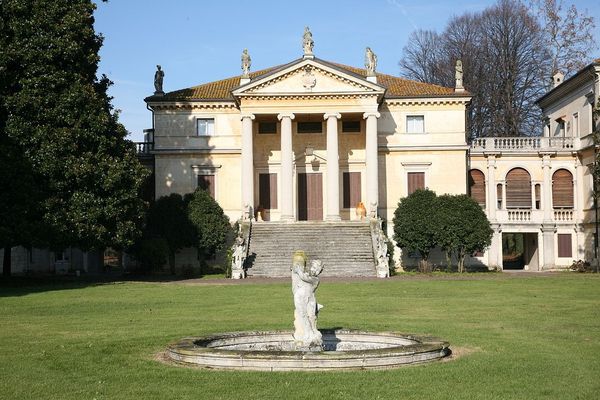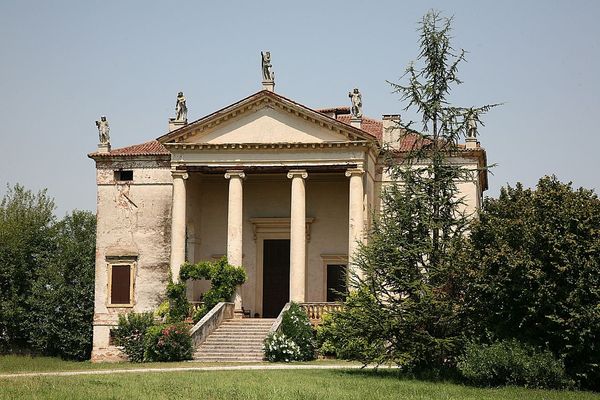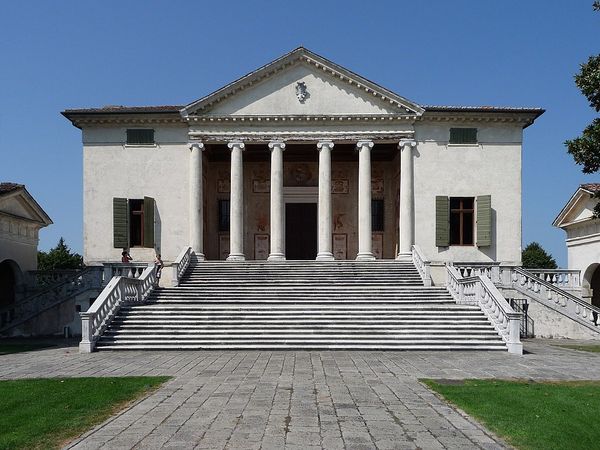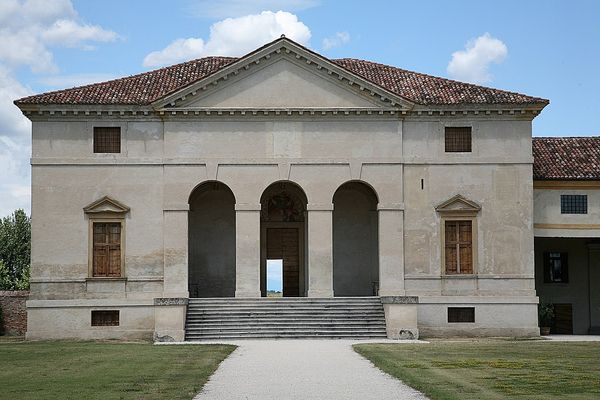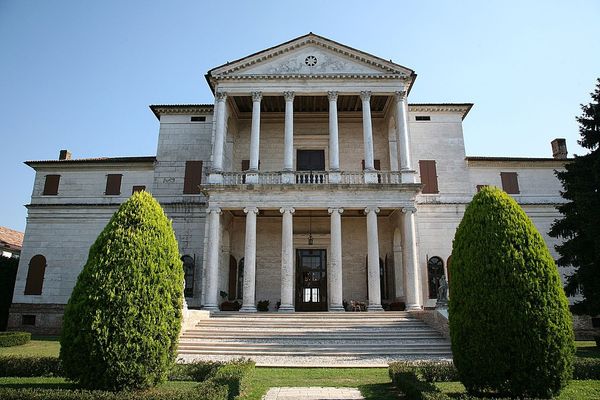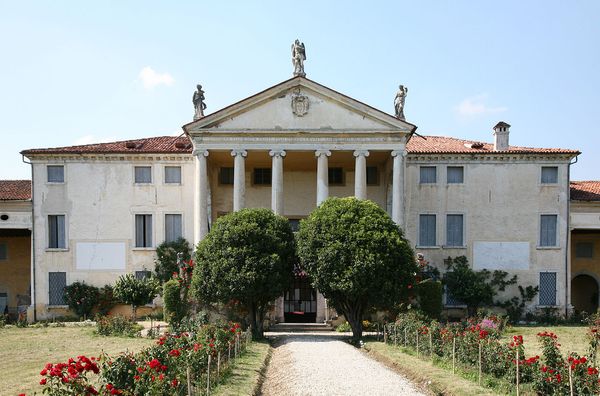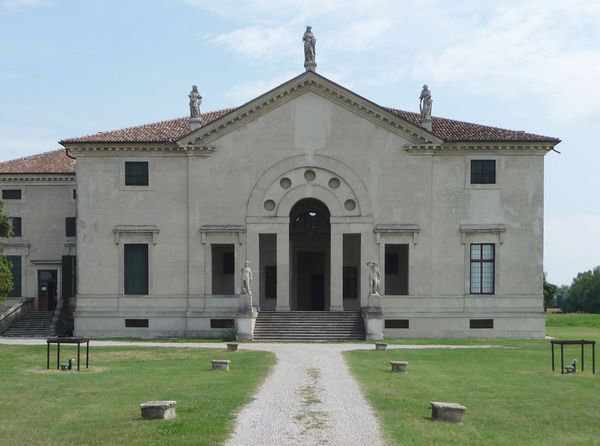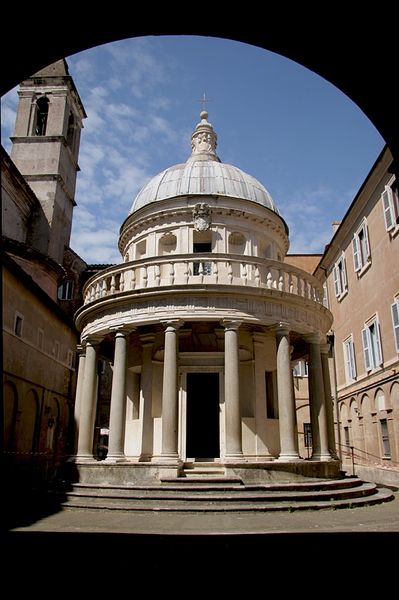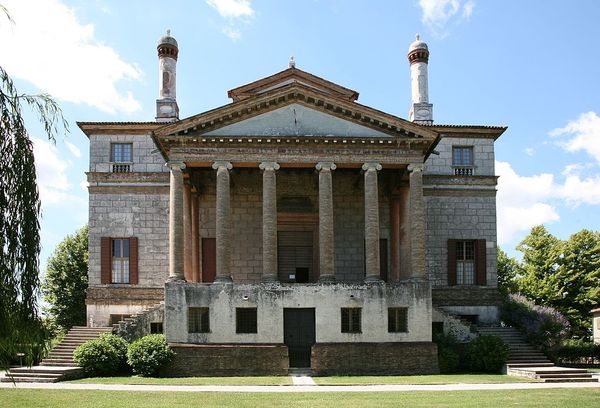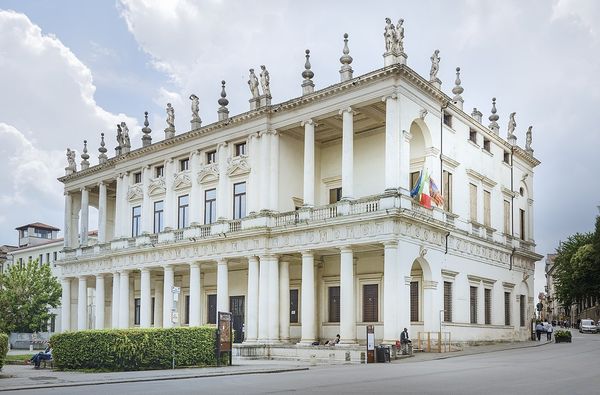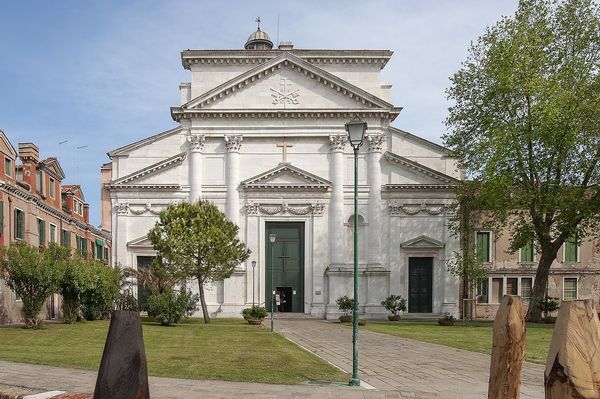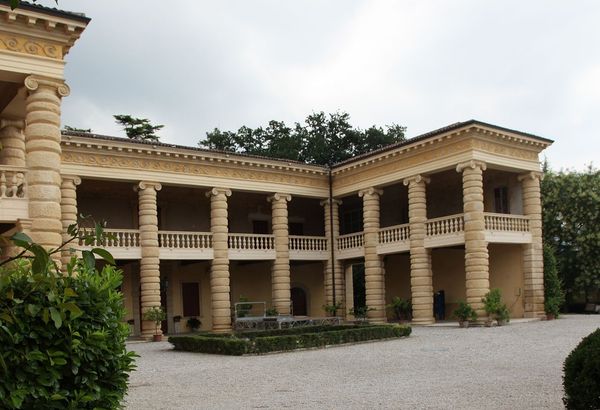
architecture
#
sky
#
architectural landscape
#
three point perspective
#
architectural photography
#
house
#
urban cityscape
#
historic architecture
#
traditional architecture
#
unrealistic statue
#
two point perspective
#
arch
#
perspective wide angle
#
architecture
#
historical building
#
building
Copyright: Public domain
Here stands Villa Capra, also known as La Rotonda, conceived by Andrea Palladio, a monument not merely of stone, but of enduring symbols. Its symmetrical facade, crowned with a classical portico and statues, is not just an aesthetic choice but a deliberate echo of ancient Roman temples. The portico itself, with its triangular pediment and imposing columns, speaks of authority, order, and harmony—virtues the Romans sought to embody in their architecture. The statues adorning the roofline, reminiscent of gods and heroes, transform the villa into a stage for human aspirations. Consider the recurring motif of the dome, a feature that, since the Pantheon, has signified the cosmos, perfection, and the divine. Palladio subtly integrates this symbol, suggesting that the villa is not just a house, but a microcosm of the universe, a place where earthly life connects with higher ideals. This aspiration transcends time, reappearing in religious and secular buildings, each adaptation imbuing it with new layers of cultural significance, yet its core message remains.
Comments
No comments
Be the first to comment and join the conversation on the ultimate creative platform.
